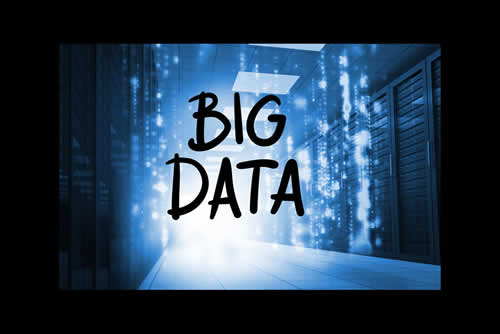Data is central to all our lives – both personal and business – and for modern companies it will drive how well they develop their understanding of the world around them. Yet as they create and collect more data, they need to store, manage, and analyze it. So setting up the right infrastructure to do this has become a critical decision. And here arises the big debate: Enterprise Data Warehouse (EDW) vs. Data Lake (don't worry: definitions are below). While both solutions help to manage vast amounts of information, their structure, use cases, and benefits are markedly different.
This means that making the right choice can determine how effectively a company can use the information it has. We shouldn't need to say that a strategy driven by extensive analysis of the numbers will outperform anything dreamed up by simple reports and (dare we say) “gut feel”.

In this article, we break down the key differences, strengths, and best use cases for each, providing you with a better basic understanding of which solution aligns best with your own needs.
What Is An Enterprise Data Warehouse?
An
Enterprise Data Warehouse is a centralized store designed to keep records from a number of sources. It enables fast querying and reporting, using what are called structured schemas to enforce data integrity.
Key Characteristics of an EDW:
- Structured and Processed Data: Information is cleaned, formatted, and structured before storage, so it's always consistent.
- Optimized for Analytics: Set up for complex queries and reports.
- High Performance: Optimized for speed, so there's quick access to finished reports.
- Governance and Compliance: Strong security and compliance procedures are built in.
The best uses for an EDW include financial reporting, customer relationship management (CRM) systems, logistics optimization, and even healthcare patient records.
But limitations can include the likely cost, and the need for structured data, which limits flexibility. Processes can also be time-consuming.
OK, So What Are Data Lakes ?
A
Data Lake holds vast amounts of raw data in its original format. This means it's stored without any predefined structure, and can therefore be processed and analyzed later. This flexibility makes it especially useful for handling information that's unstructured, - things like activity logs and even multimedia files.
Key Characteristics of a Data Lake:
- Stores Raw Data: All types are accepted - structured, semi-structured, and unstructured.
- Schema-on-Read: Information is stored “as-is” and structured when (and how) it is needed.
- Scalable and Cost-Effective: Easily handles large volumes.
- Supports Advanced Analytics: Ideal for AI, machine learning, and big data.
A data lake is particularly useful for deep analytics: storing and analyzing IoT (“Internet of Things”) data, training AI models and – would you believe – pulling out customer sentiment from social media!

But it's not all good news … as you can imagine, with no inherent structure, there can be a "data swamp" where everything becomes disorganized and difficult to understand. Performance is often slower than with EDWs, and there are usually heavy demands on management of the infrastructure.
Choosing Between an EDW and a Data Lake
If you need to make a choice, you'll have to consider some very important factors:
- What kind of data do you have? If you work mainly with structured data (e.g., financial records, CRM information), an EDW is the better fit. But if you need to store unstructured or raw data (e.g., sensor numbers, images and videos), a Data Lake is more suitable.
- What are you doing? For fast, operations-focused analytics, EDWs excel. For exploratory work, or using in an AI context, Data Lakes provide greater flexibility.
- What speed of performance do you want? EDWs give faster query performance because Data Lakes need additional processing.
- Do you need regulatory compliance? Industries like finance and healthcare have strict compliance requirements and in this case, EDW may be the only viable option.
Can You Use Both?
Absolutely yes! Many organizations today
use a hybrid approach, employing a Data Lake to store raw statistics and an EDW to extract, transform, and load what's needed for analysis. This allows a balance of flexibility and performance.

The Role of Custom Software Development
As a business grows, its data needs change. Off-the-shelf solutions don't always fit anymore, which makes custom software development necessary. And bearing in mind what we've said already, you might guess that this can lead to three different kinds of development strategy:
- Custom EDW Solutions: Here, a data warehouse is tailored for the needs of the business, ensuring solid integration with what's already there.
- Custom Data Lakes: If the data set is large and complex, custom-built lakes will improve storage efficiency and accessibility.
- Hybrid Solutions: And of course – especially with the biggest systems – custom-built platforms can be built that merge both EDW and Data Lake functionalities.
In this way, the right architecture can be built to support business the needs of the organization.
Wrapping Up
Well, there's no one-size-fits-all solution, is there? Any businesses needs to evaluate its requirements, its operational goals, and its analytical needs before making a decision.
Without wanting to sound too simplistic, it's likely that if you need structured, high-performance analytics with strong governance, EDW will be the way to go. But if your data is complex and unstructured, a Data Lake will be the best option. And, predictably, if you deal with both structured and unstructured data with a balance between governance and flexibility, you should be thinking about a hybrid approach.
In any case, over time it's clear that the data management needs of every business that deals with any volume of information are going to change. And for larger businesses, whichever solution they choose, they'll need to carefully consider their situation, and their likely needs, so they make the right decision for their future.



























